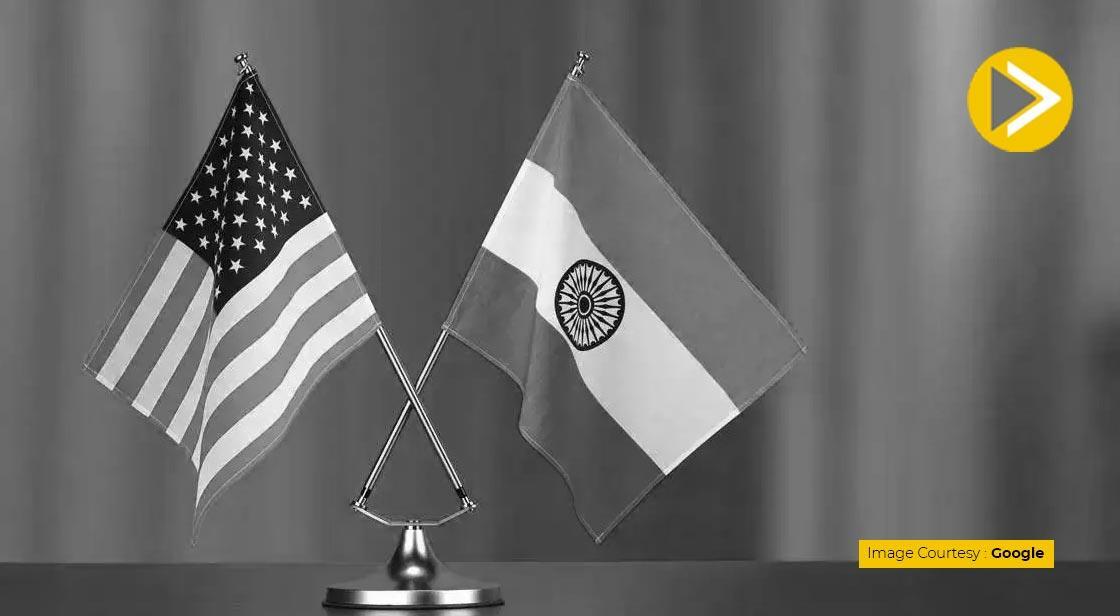Drafting begins for India-US trade pact; Commerce Minister Goyal vows no rush deal

News Synopsis
Negotiators from India and the United States have moved into the phase of working on the language of the deal text, signalling momentum in the talks. A senior Indian government official said on Friday that, while a final public announcement still requires “political convergence”, the teams are actively engaging on both tariff and non-tariff matters.
In New Delhi, the official explained: “There are some non-tariff barriers that are being discussed. Teams had virtual sessions yesterday, and some more virtual talks will happen on Monday. In principle, we have agreed and are finalising the language (of the deal text). As far as the deal is concerned, there is more or less convergence from both sides.”
India’s Stance: No Deal Under Pressure
Speaking at the Global Dialogue in Berlin, Commerce Minister Piyush Goyal made it clear that India’s participation is guided by long-term national interest rather than external deadlines or coercion. He said:
“We do not do deals in a hurry and we do not do deals with deadlines or with a gun to our head.”
He further elaborated: “India looks long-term, India never takes decision in a rush or on the pressure of the moment. And we have accepted if there is a tariff on us, there is a tariff on us. We are looking how to overcome that, we are looking at newer markets, we are looking at a stronger demand impetus within the Indian economy, so we have a very resilient structure. (We are) 1.4 billion people, we are young.
So they are not in a situation where they want to do sub-optimal deals, we would like to really look at long term. We recognise that 20-25 years from now, we will be a $30-trillion economy and, accordingly, we will negotiate based on the future. Trade deal is for the long run, to recognise the future and to get the best deal for the country.”
When a panelist raised the question of India’s alignment with Russia, Goyal responded: “I do not think India has ever decided who its friends will be based on any other considerations other than national interest… and if somebody tells me you can’t be friends with the EU, I won’t accept that, or if somebody tells me tomorrow I can’t work with Kenya, it’s not acceptable.”
He added: “I was reading in today’s paper that Germany is asking for an exemption from US sanctions on oil… The UK has already sorted or probably got an exemption for procuring oil from the US… so then why single out India?”
Key Issues on the Table
Tariffs and Reciprocal Access
Officials say the forthcoming agreement will not be a conventional Free Trade Agreement (FTA). One senior official noted:
“It won’t be a conventional FTA because there are reciprocal tariffs which are not WTO most-favoured-nation (MFN) tariffs. Normally, deals are negotiated MFN vs MFN. In that context, this will be a different kind of deal.”
With the US having imposed a spectrum of tariffs — including under Section 232 — India is seeking to address those affected areas. At the same time, India has offered meaningful concessions: for example, reports in April-May 2025 indicate India may cut tariffs on over half of US goods worth about US$23 billion in the first phase of the deal.
Non-Tariff Barriers & Digital Trade
Besides standard tariff reductions, negotiations are addressing non-tariff measures, digital trade, and service-market access. Virtual sessions have been held and industry stakeholders in India have been asked to input on possible reciprocal rules of origin or data-flow restrictions.
Timeline and Trade Goals
India and the US have committed to an ambitious trade target of US$500 billion in bilateral trade by 2030. The current talks aim to conclude the first tranche — sometimes called an interim agreement — by fall 2025. As of July 2025, five rounds of negotiations have been completed.
Domestic Considerations and Stakeholder Engagement
India is actively consulting its industries and trade bodies to ensure domestic interests are safeguarded. For example, the government has advised businesses to identify non-tariff barriers they face and to prepare for possible reciprocal tariffs in the proposed agreement.
Moreover, sectors such as labour-intensive exports (textiles, leather, gems & jewellery) are seen as vital for India’s export push, while agricultural and vehicle-import access remain sensitive on the Indian side.
Why This Deal Matters
-
Strategic Shift — The trade pact with the US signals India’s readiness to engage in deeper economic ties beyond traditional markets, aligning with its ambition of a US$30-trillion economy over the next 20-25 years (as noted by Minister Goyal).
-
Geopolitical Weight — A successful agreement would strengthen India’s global trade profile and supply-chain integration, particularly as global companies look beyond China.
-
Domestic Impact — For India’s youth-driven and aspirational population, expanded exports and access to technology and services could boost job creation and economic resilience.
-
Tariff Pressure Relief — With the US threatening and in some cases applying steep reciprocal tariffs, the deal offers a path to relief for Indian exporters facing uncertainty.
Conclusion
India and the US are clearly moving into the final phase of trade negotiations, with the drafting of deal text now underway and broad convergence reportedly in sight. Yet, as Commerce Minister Goyal has emphasised, India is not willing to rush or compromise under pressure. The pact being negotiated is unique — not a standard FTA — and reflects the complexity of modern trade deals which combine tariffs, digital trade, supply chains and strategic interests.
As both sides aim for significant progress by fall 2025, the path ahead hinges on political alignment, stakeholder buy-in, and maintaining balance between access and protection. If successful, the agreement could help lay the foundation for what India sees as a long-term trajectory — more than doubling trade with the US and strengthening its role in the global economy.
You May Like









